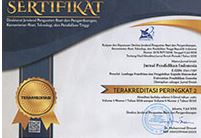INVESTIGATION OF STUDENTS’ PERCEPTION TOWARD E-LEARNING IN THE FIFTH SEMESTER OF ENGLISH LANGUAGE EDUCATION UNDIKSHA
DOI:
https://doi.org/10.23887/jpai.v3i2.21395Keywords:
Students’ perception, E-learning, Technology Acceptance Model (TAM)Abstract
This study aims to investigate students' perceptions of e-learning. This research was conducted to determine students' perceptions in the use of information technology, especially e-learning in classroom learning. The research data were collected at English Language Education of UNDIKSHA with 80 questionnaires. The outcomes of the study showed the majority of the students think e-learning is an innovative idea and must be encouraged. Hybrid learning, which is a combination of online learning and face-to-face learning, is the preferred mode of learning for the respondents.
References
Al-Gahtani, S., & King, M. (1999). Attitudes, satisfaction and usage: Factors contributing to each in the acceptance of information technology. Behaviour and Information Technology, 18(4), 277–297.
Ajzen, I. & Fishbein, M. (2000). Attitudes and the attitude-behavior relation: Reasoned and automatic processes. In W. Stroebe & M. Hewstone (Eds.), European review of social psychology (pp. 1-33). John Wiley & Sons.
Bassi, L. (2010). Learning and Training: Statistics and Myths. How Effective is Training? URL:
http://www.nwlink.com/~donclark/hrd/trainsta.html. Accessed on 25th February 2019.
Coursera (2015). Meet our partners. Retrieved February 6, 2019 from https://www.coursera.org/about/partners
Creswell, J. W. (1994). Research design: Qualitative and quantitative approaches. Thousand Oaks, CA: SAGE Publications.
Davis, F. D., Bagozzi, R. P. & Warshaw, P. R. (1989). User acceptance of computer technology: A comparison of two theoretical models. Management Science, 35(8), 982- 1003.
http://www.jstor.org/pss/2632151
EdX (2015). Schools and partners. Retrieved February 6, 2019 from https://www.edx.org/schoolspartners
Engelbrecht, E. (2005). Adapting to changing expectations: Postgraduate students’ experience of an e-learning tax program. Computers and Education, 45(2), 217–229.
Kalpana, V. (2010). Future Trends in E-Learning. IEEE 2010 4th International Conference on Distance Learning and Education (ICDLE).
Kelly, T., & Bauer, D. (2004). Managing intellectual capital via e-learning at Cisco. In C. Holsapple (Ed.), Handbook on knowledge management 2: Knowledge directions (pp. 511–532). Berlin, Germany: Springer.
Lee, C., & Witta, L. (2001). Online students perceived self-efficacy: Does it change? Paper presented at the national convention of the Association for Educational Communications and Technology, Atlanta, GA.
Masrom, M. (2007). Technology acceptance model and e-learning. In: 12th International Conference on Education, 21-24 May 2007, Sultan Hassanal Bolkiah Institute of Education, University Brunei Darussalam http://eprints.utm.my/5482/1/MaslinMasrom2006_Techn.pdf
Ong, C. S., & Lai, J. Y. (2006). Gender differences in perceptions and relationships among dominants of e-learning acceptance. Computers in Human Behavior, 22 (5), pp.816– 829.
Veeramani, M. (2010). E-learning: A Conceptual Framework. International Journal of Educational Research and Technology, 1 (2).










